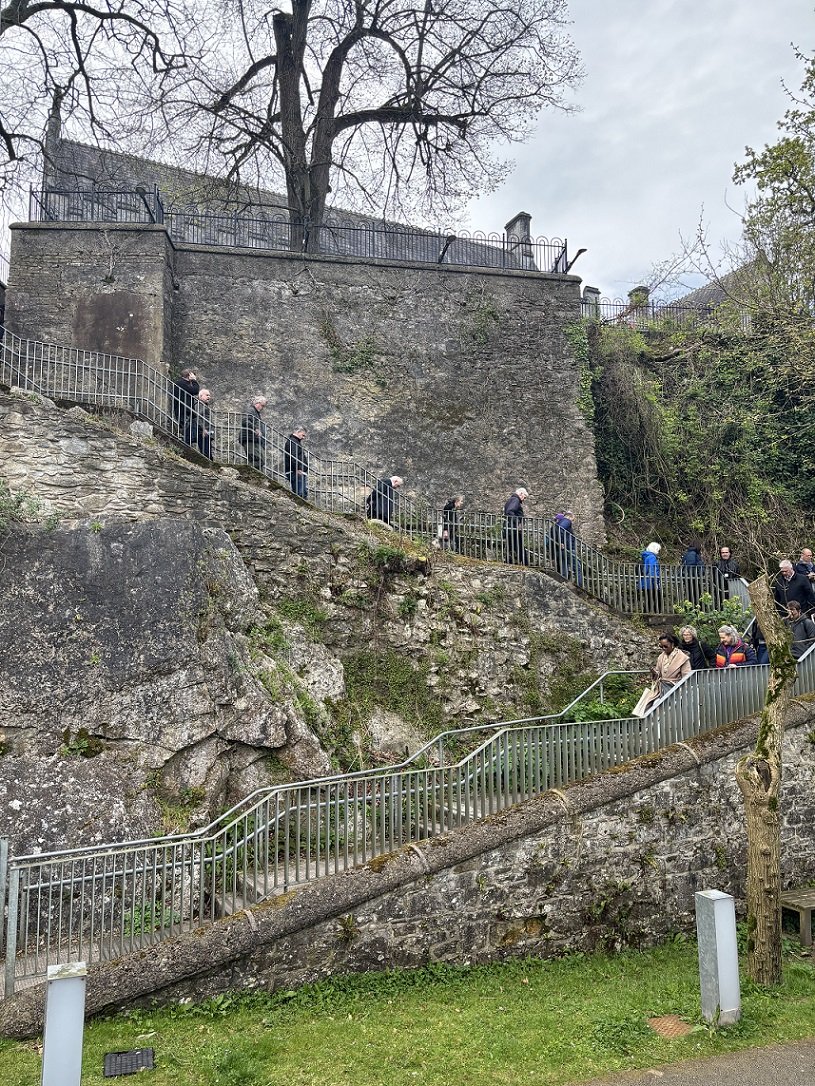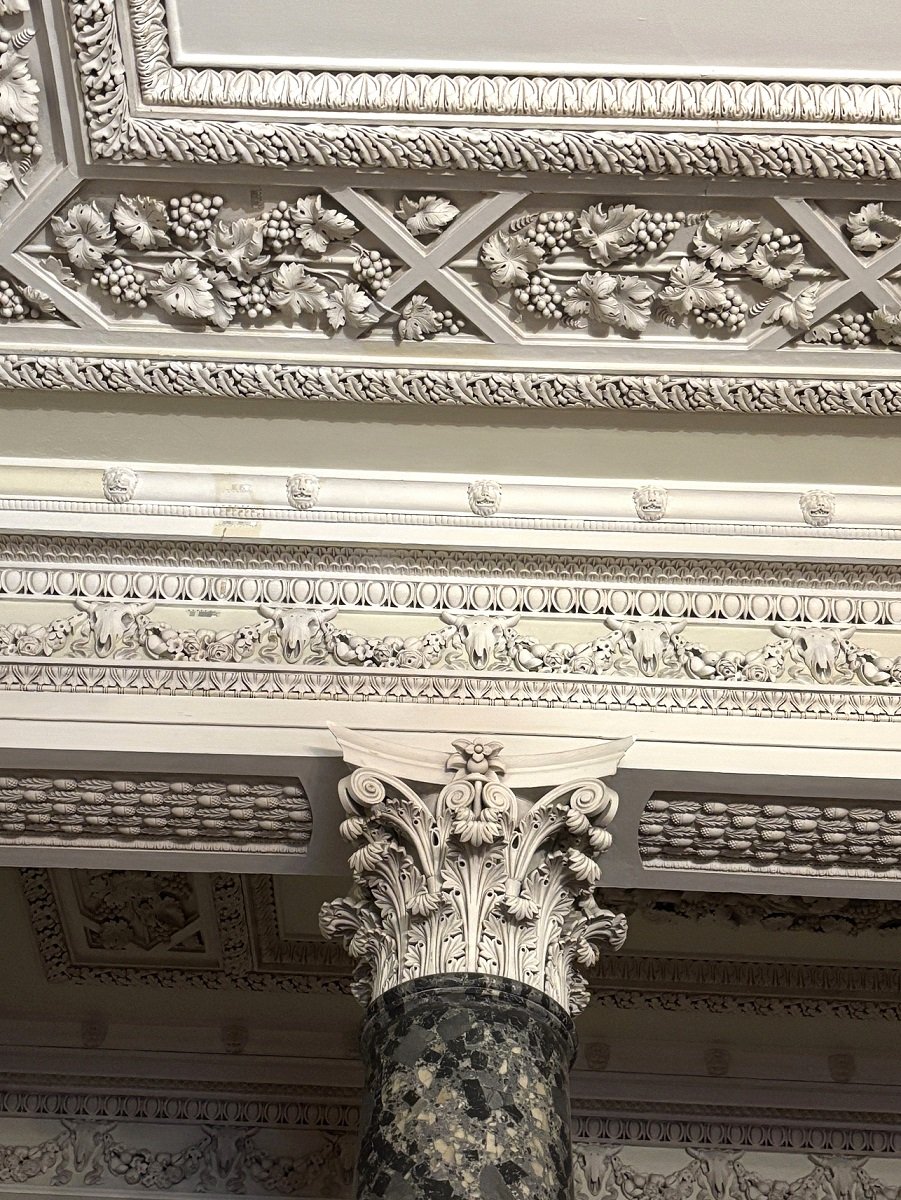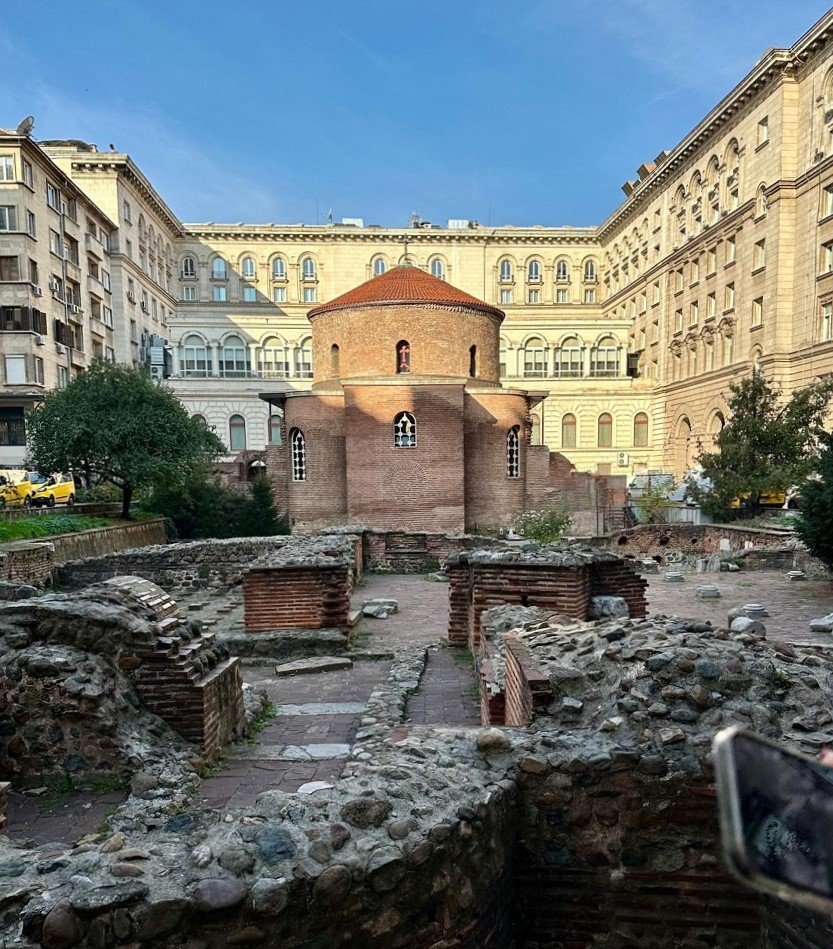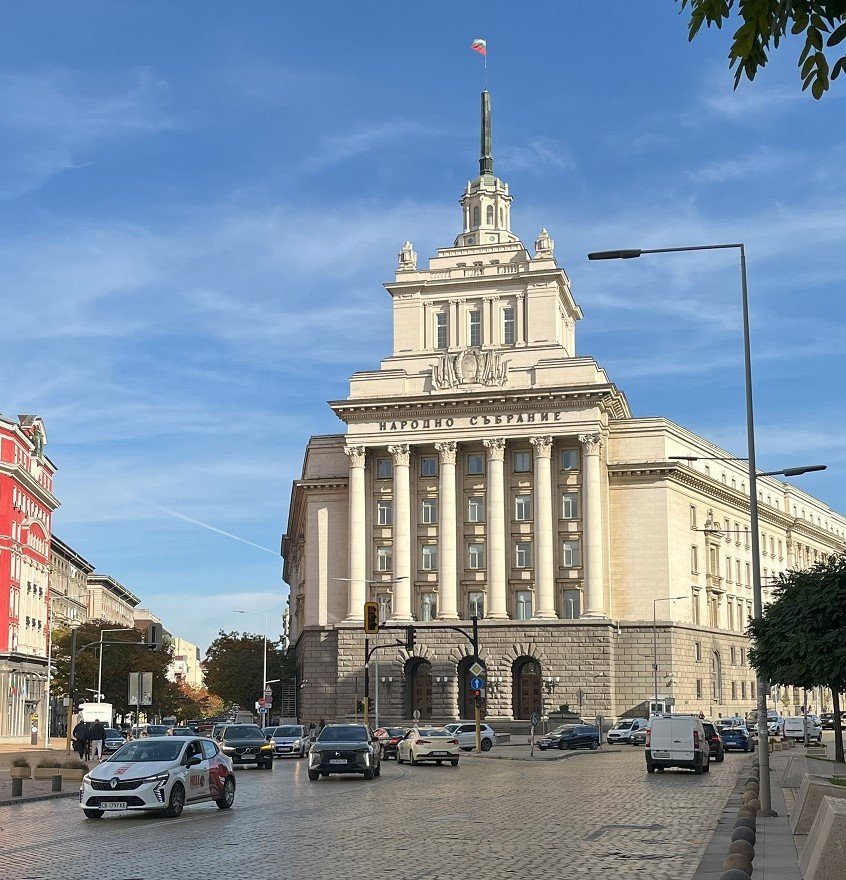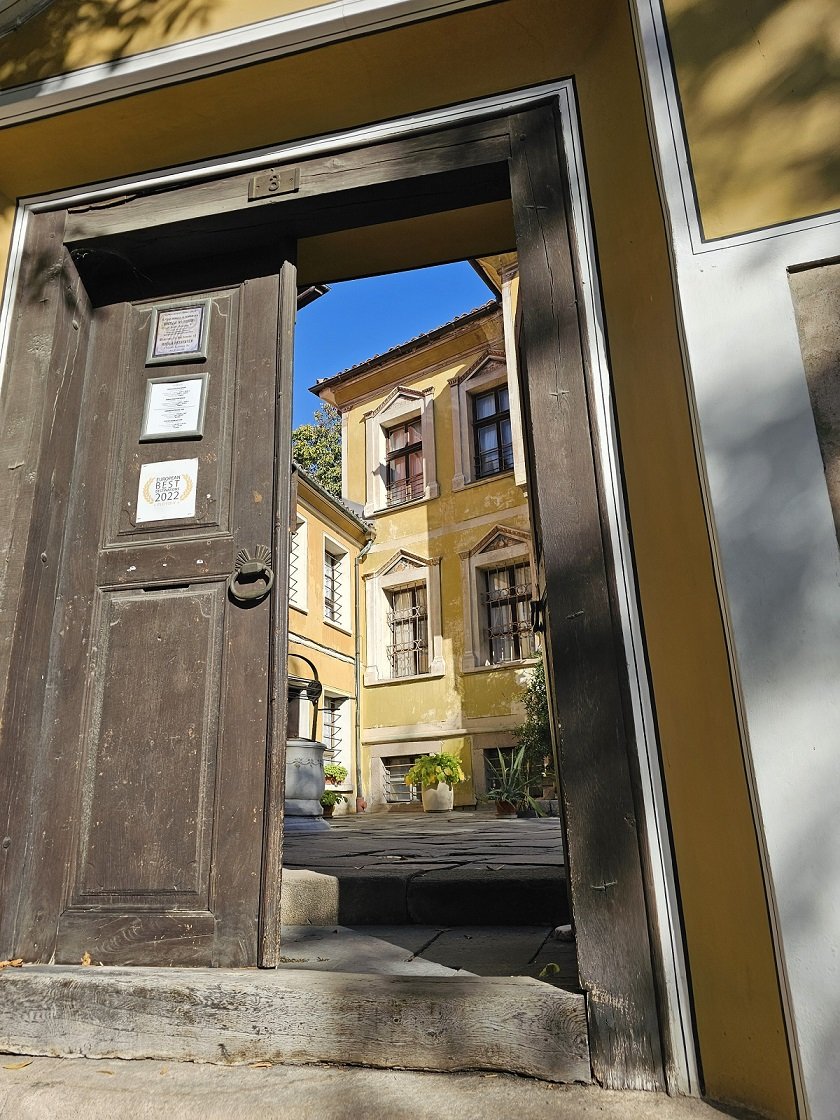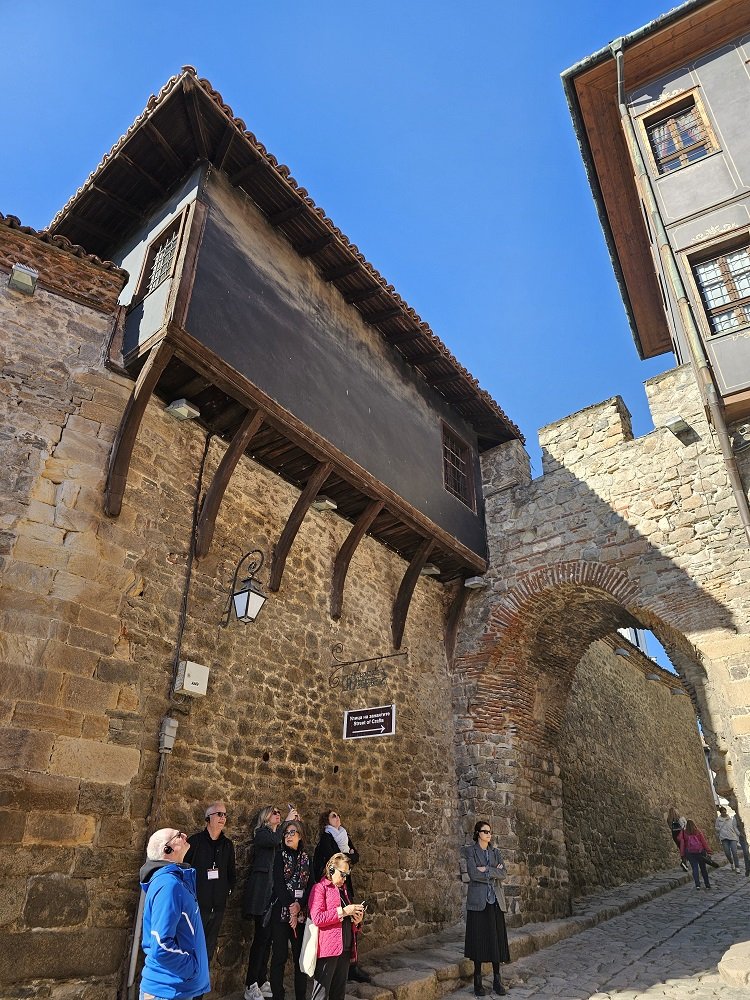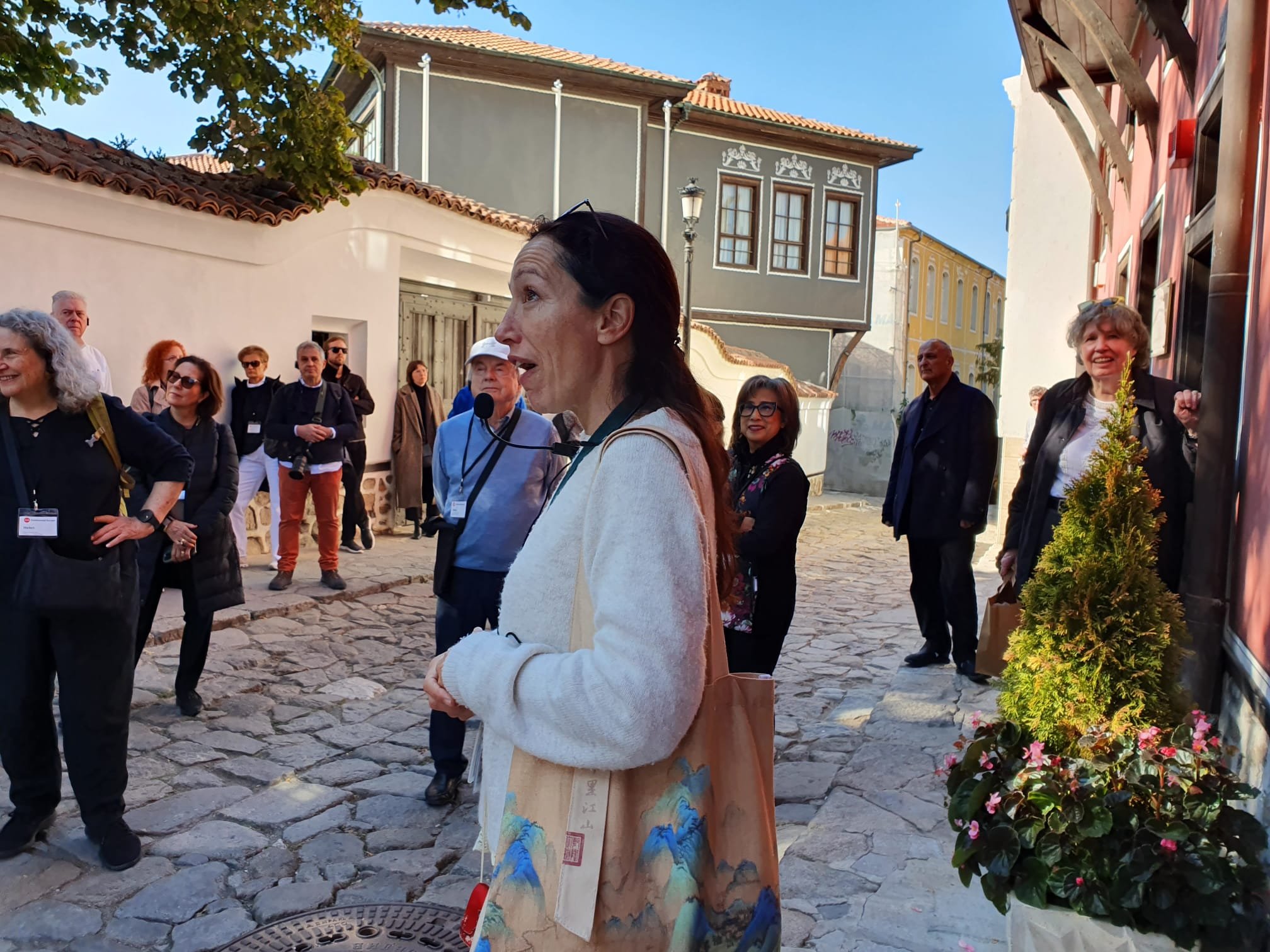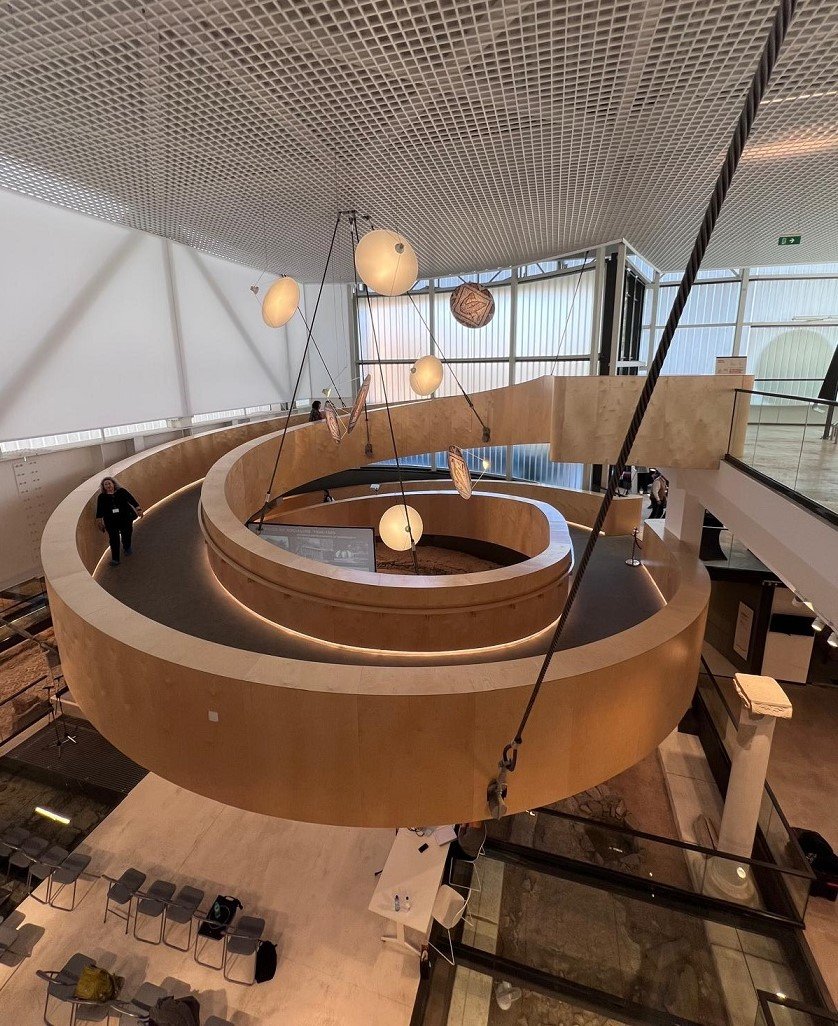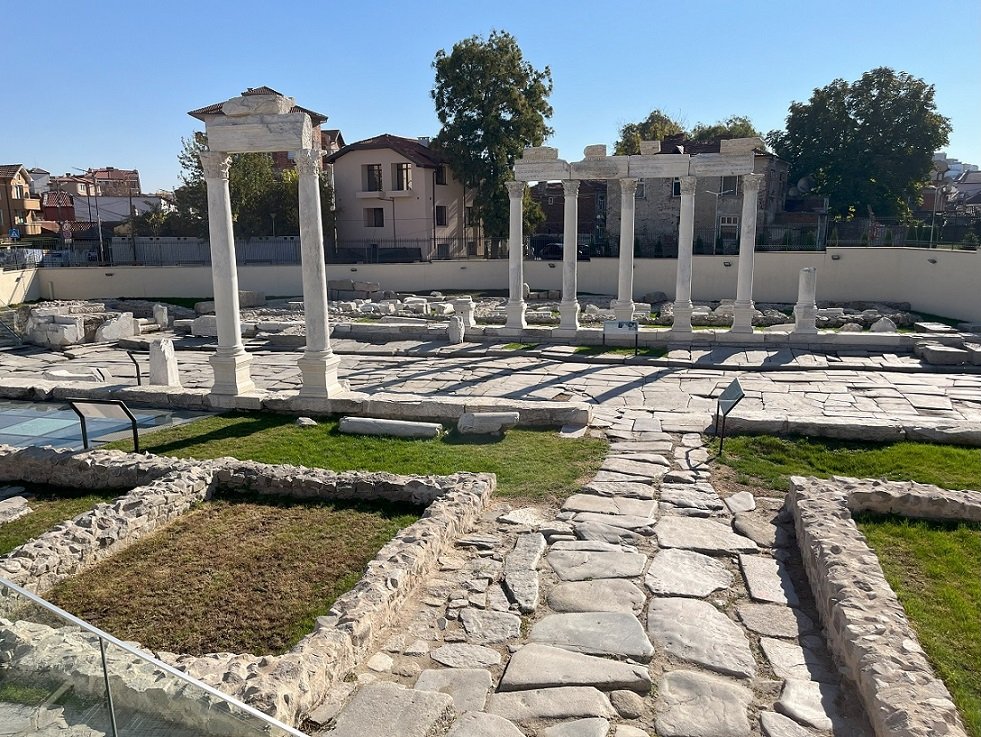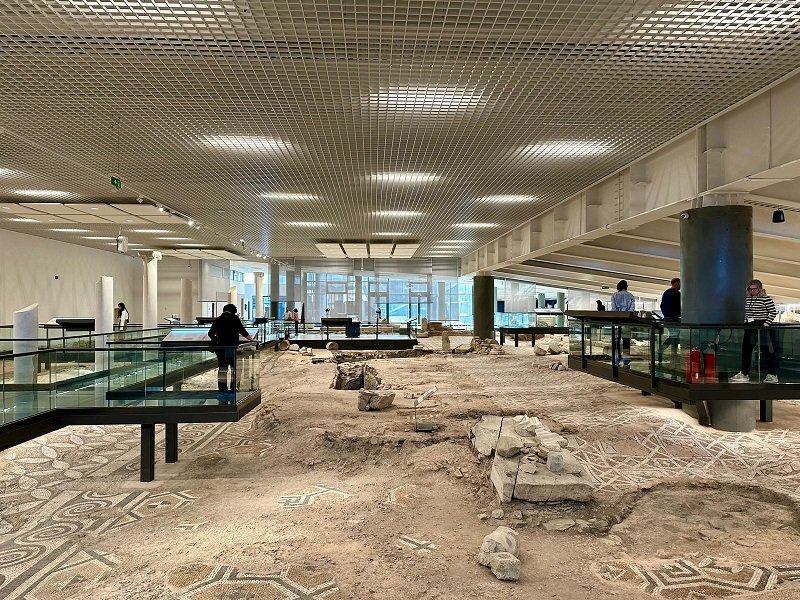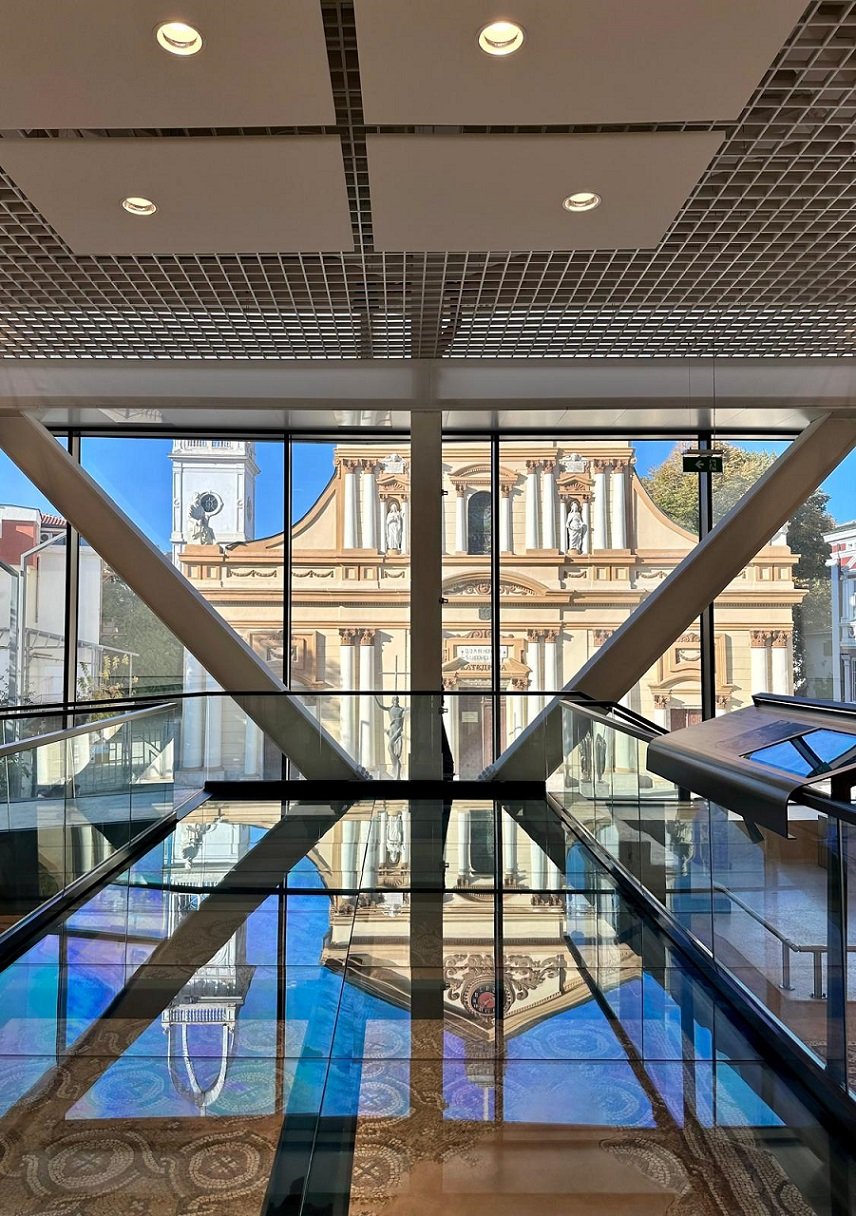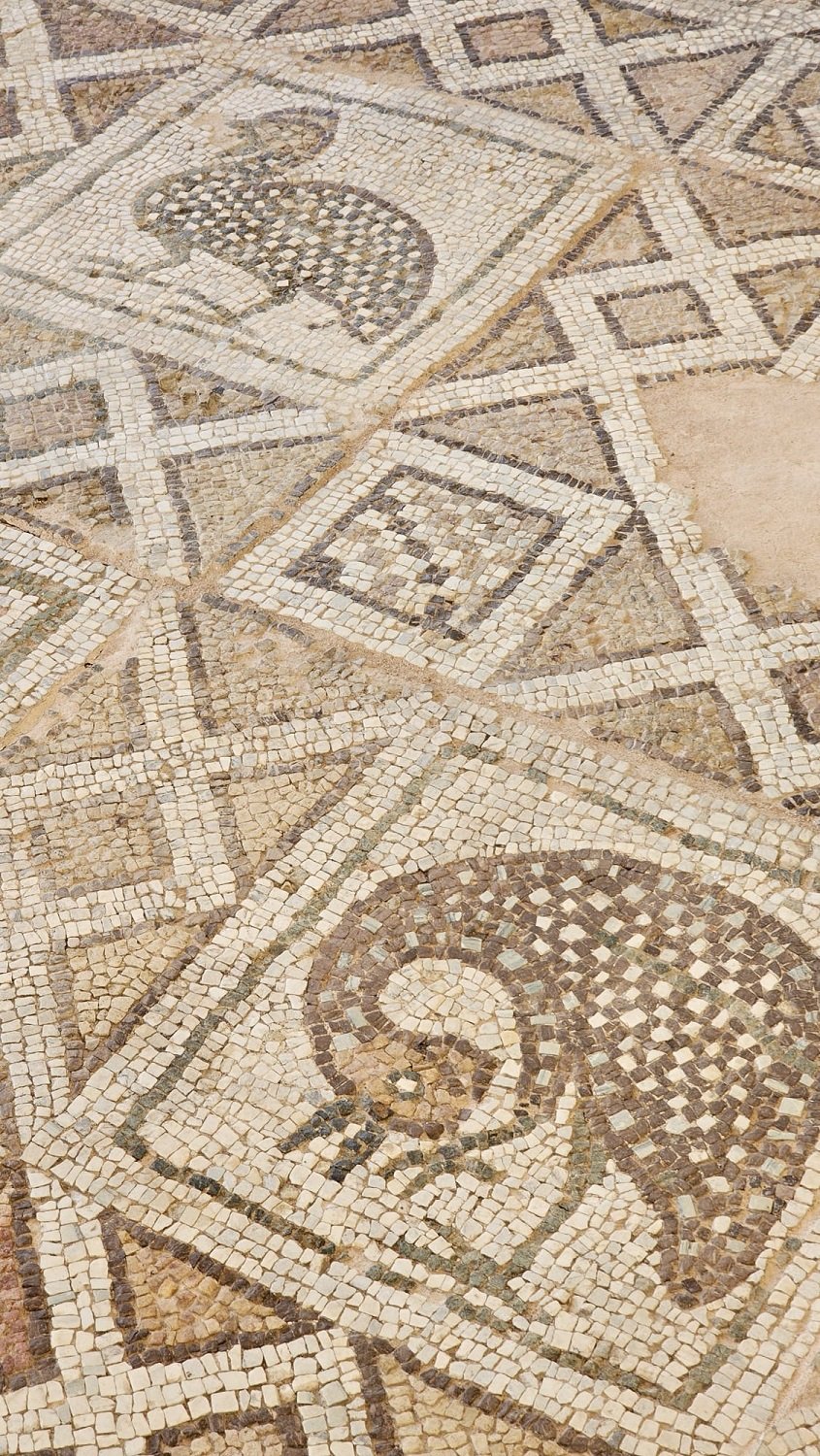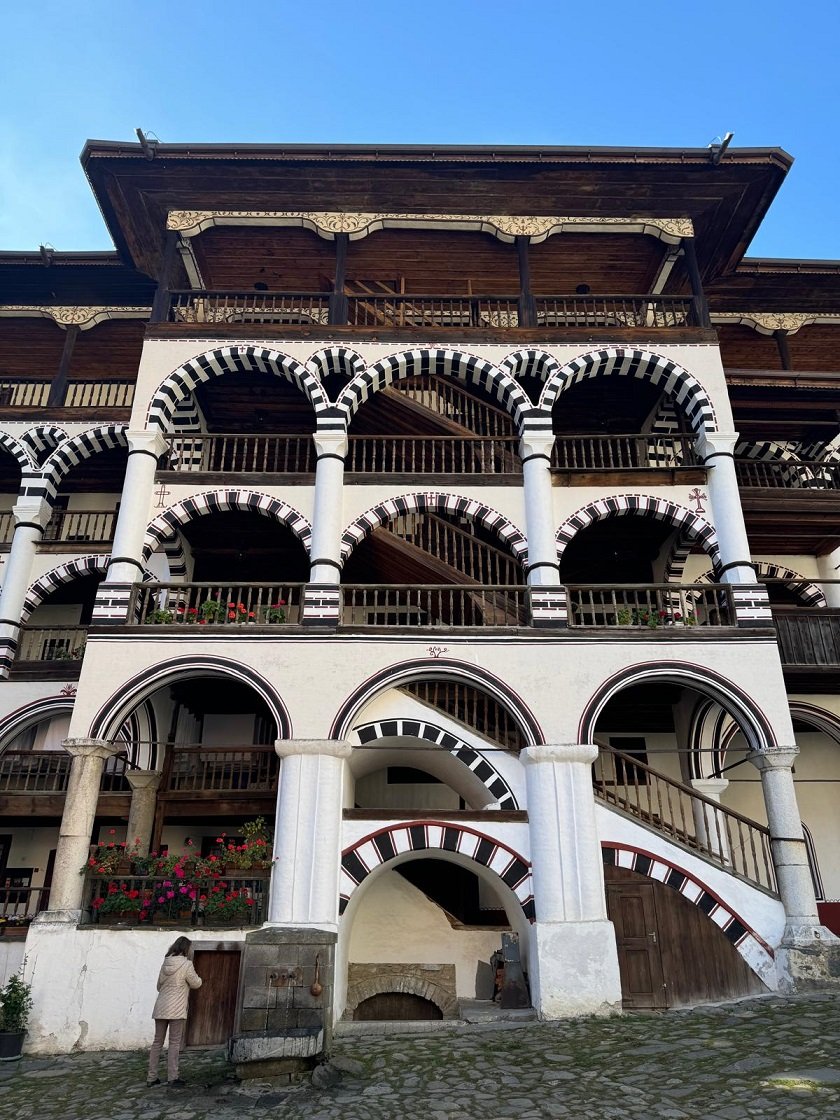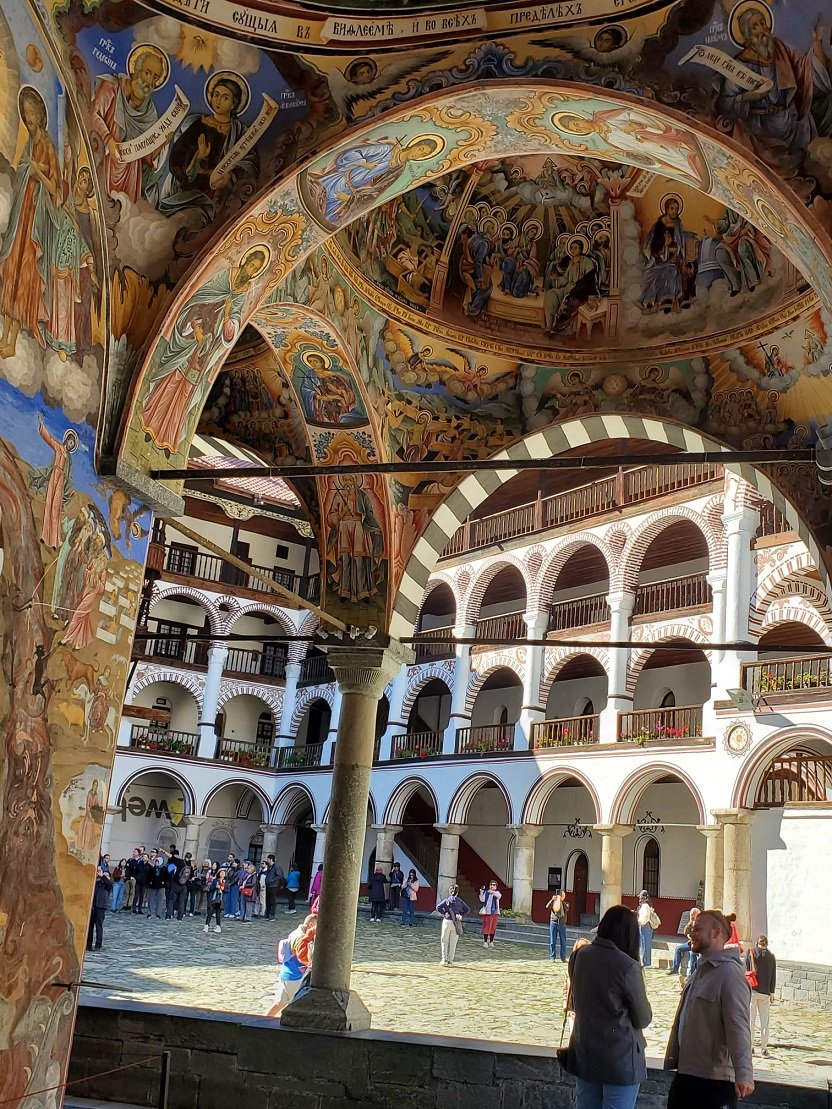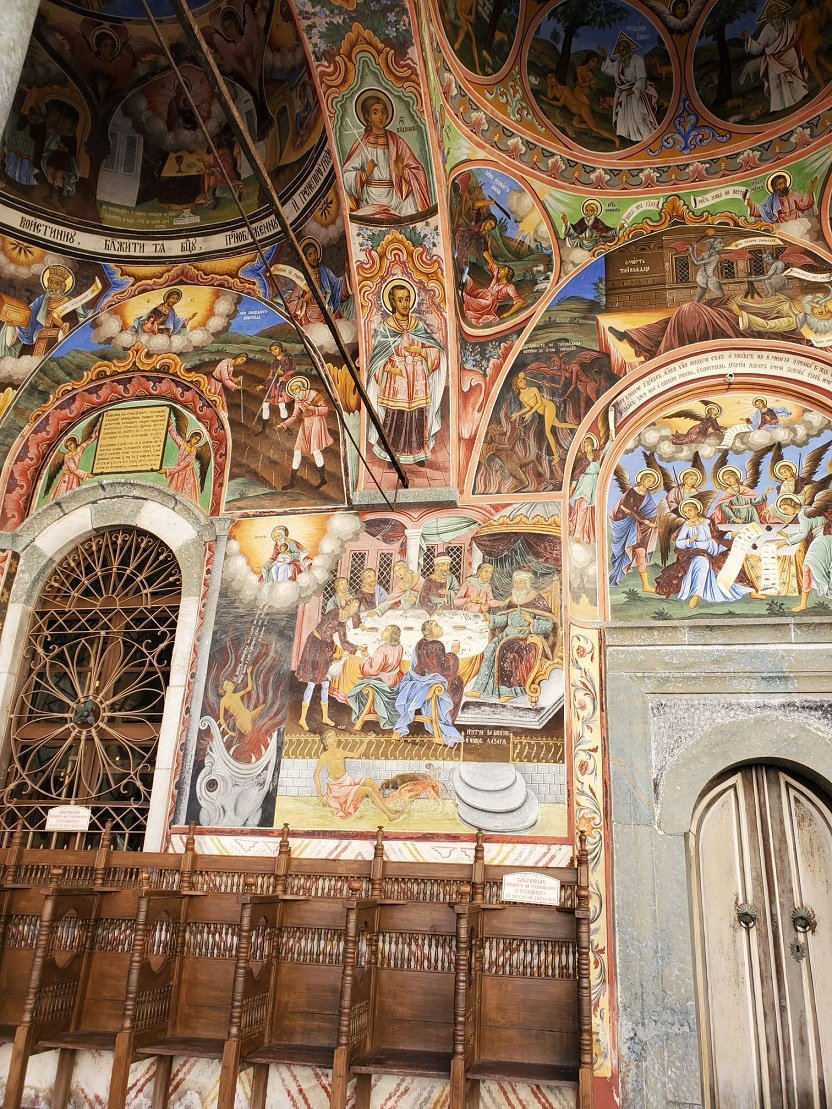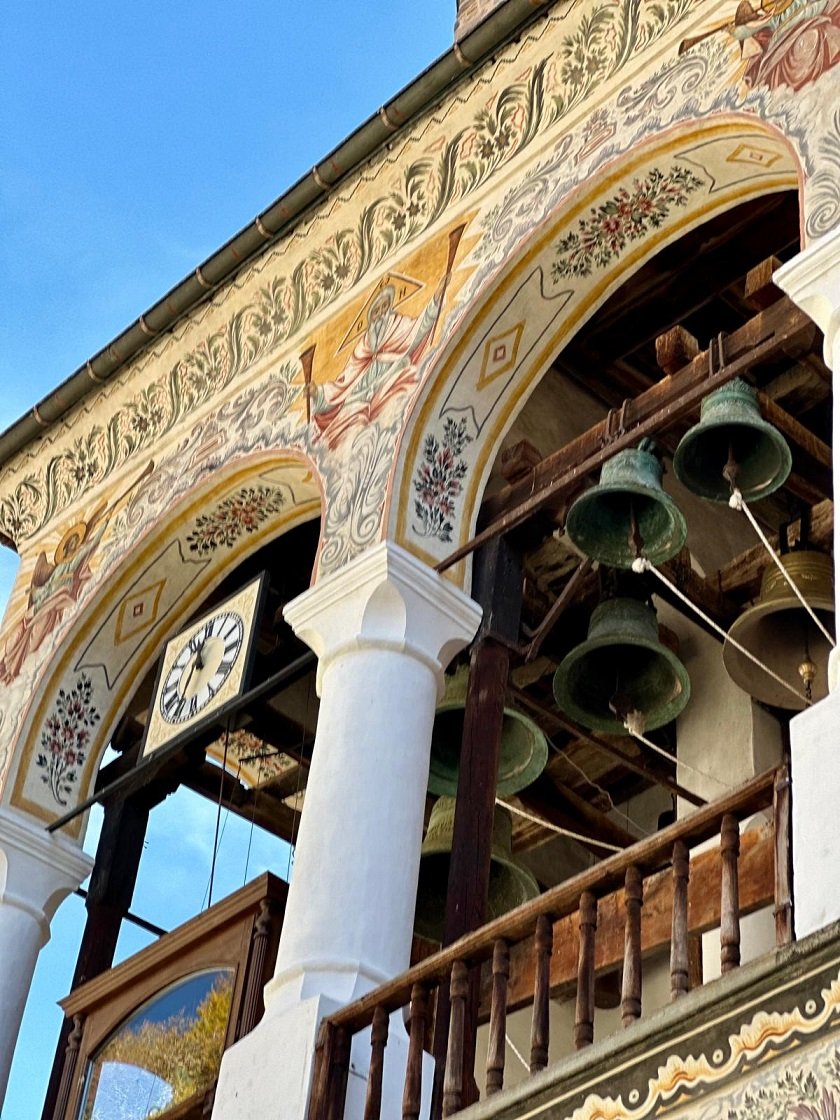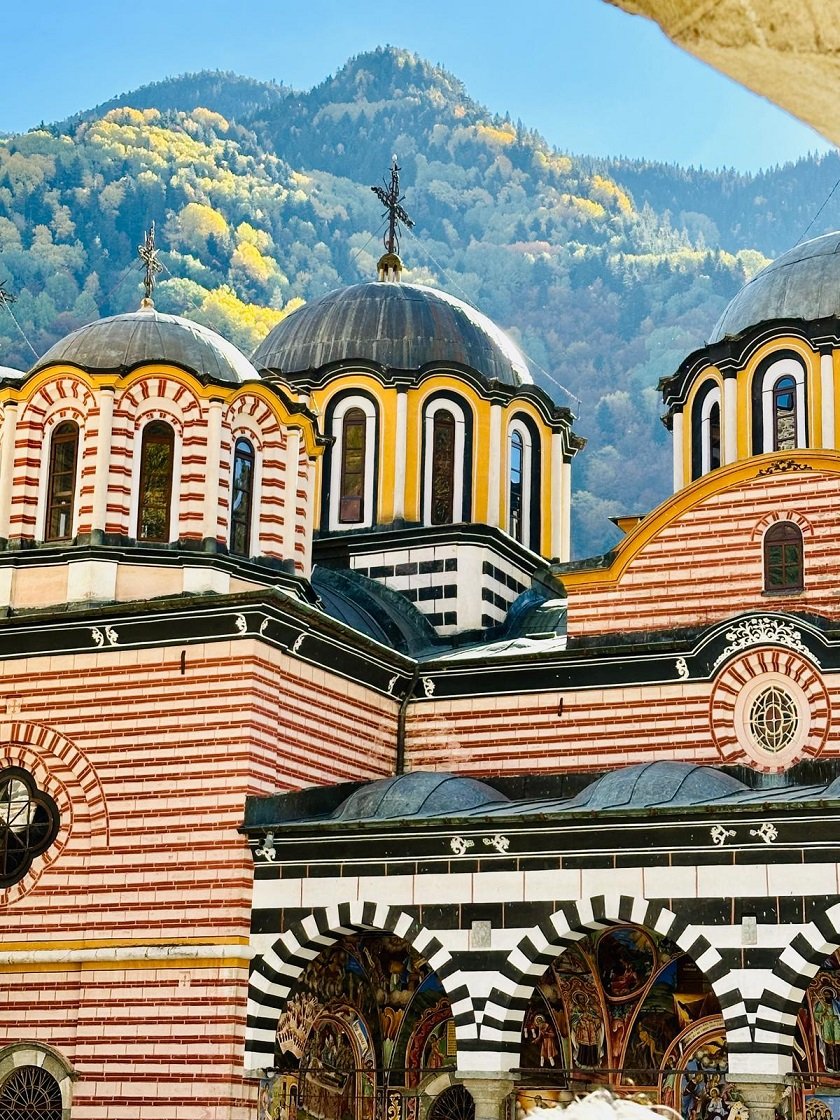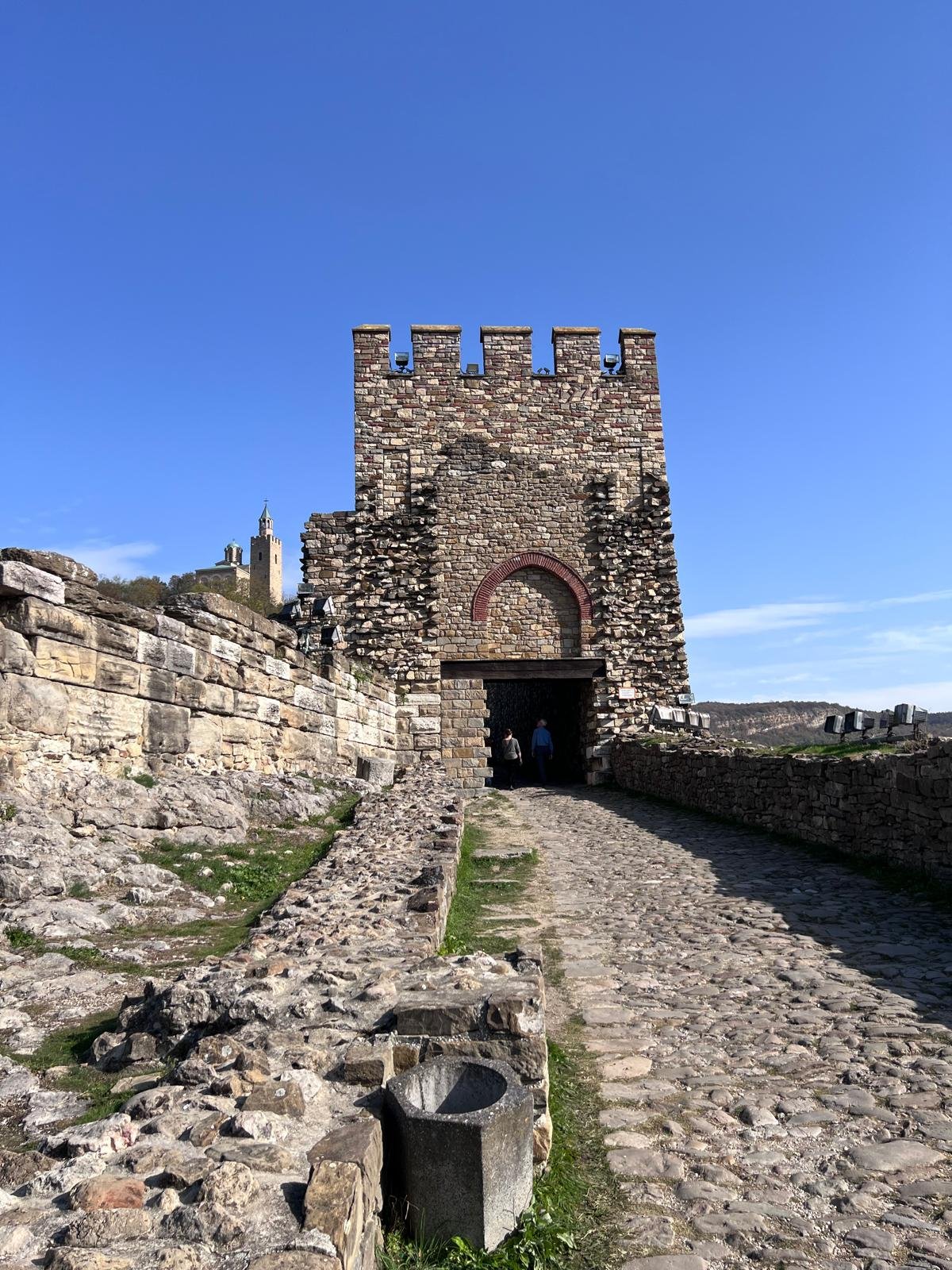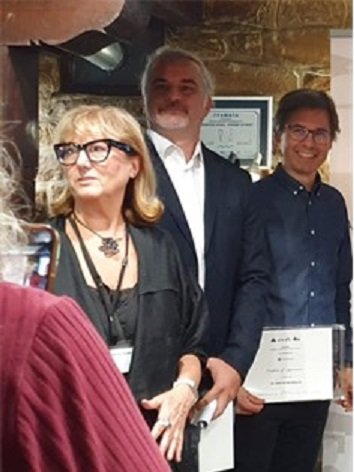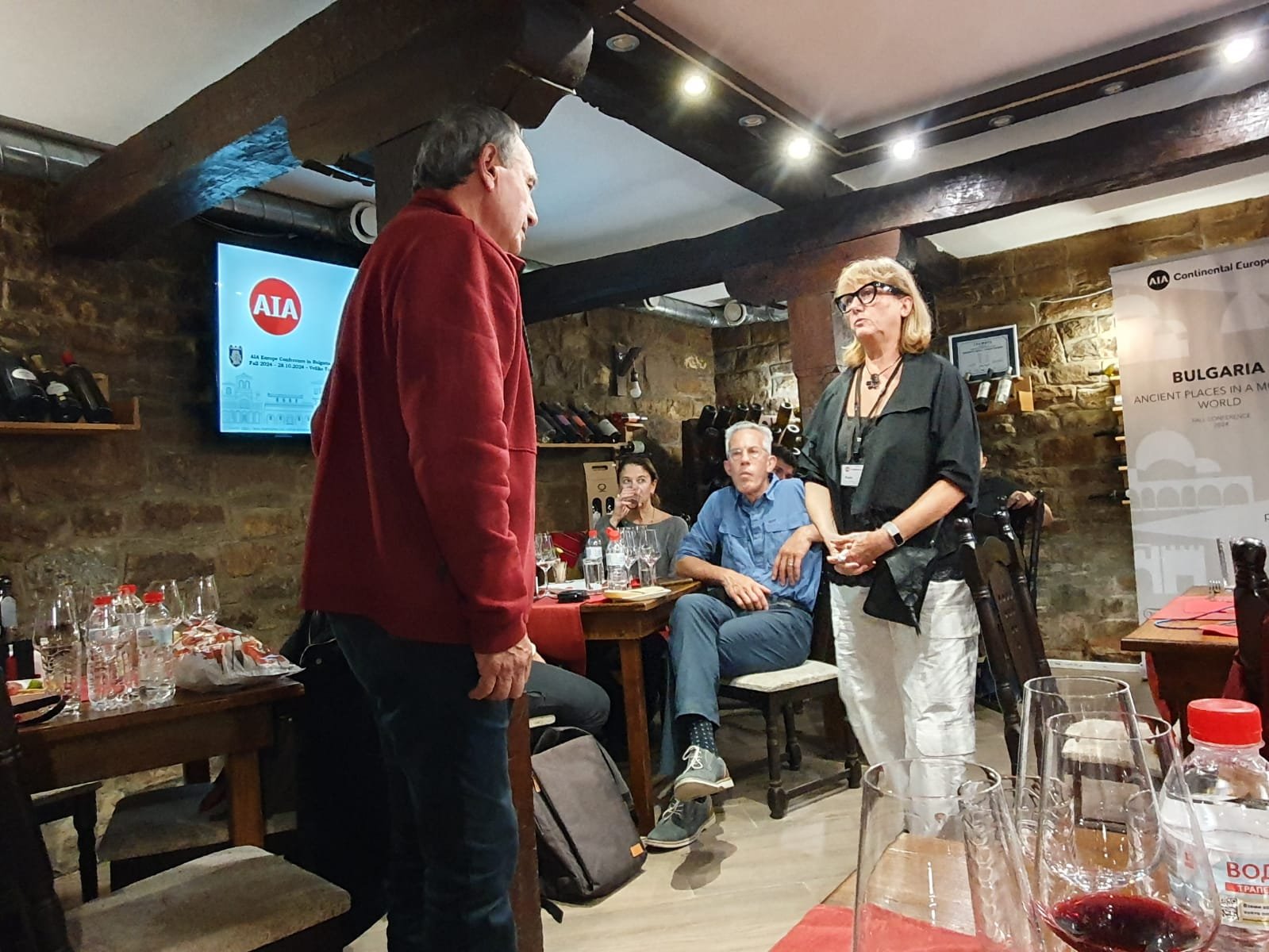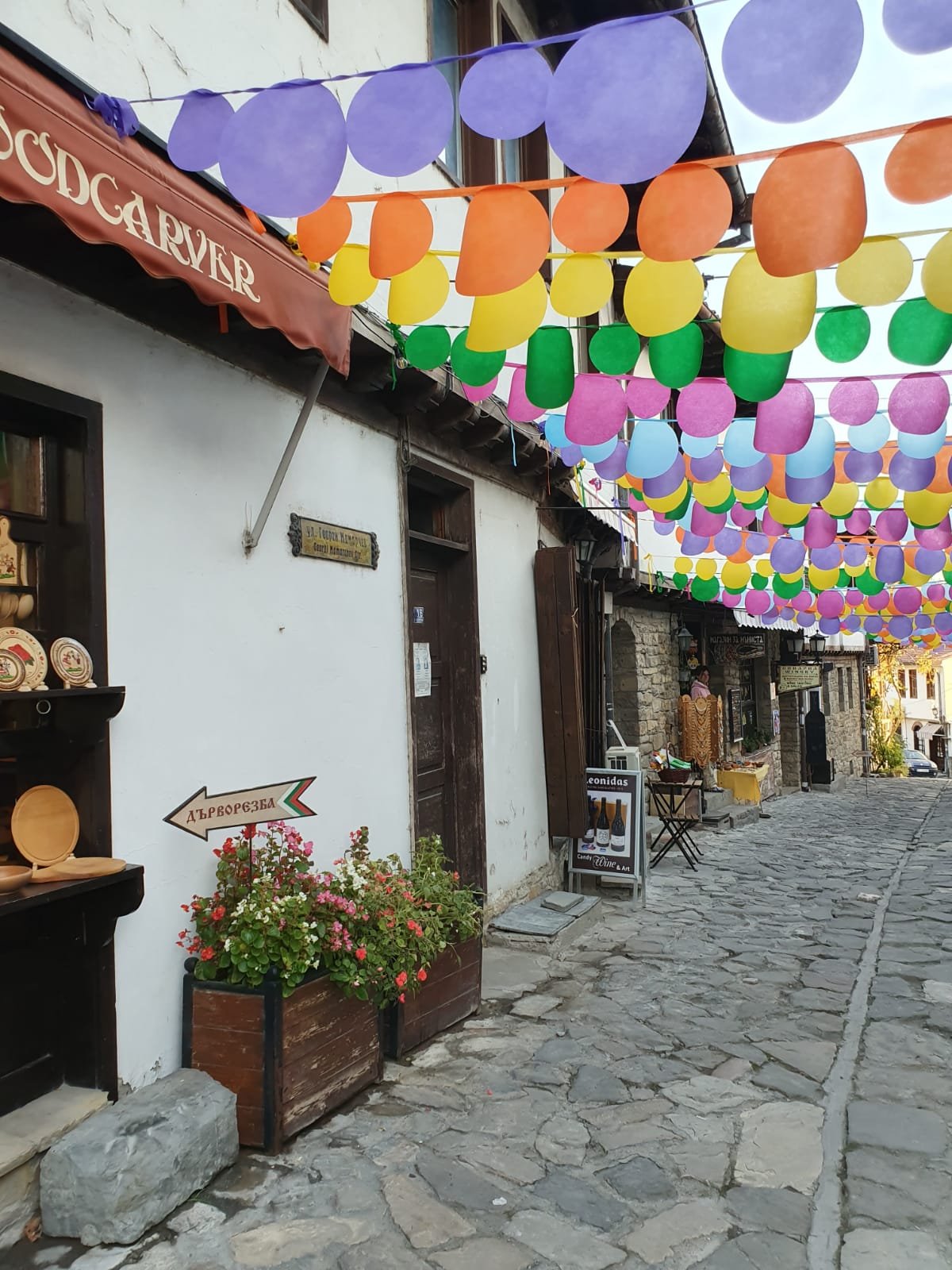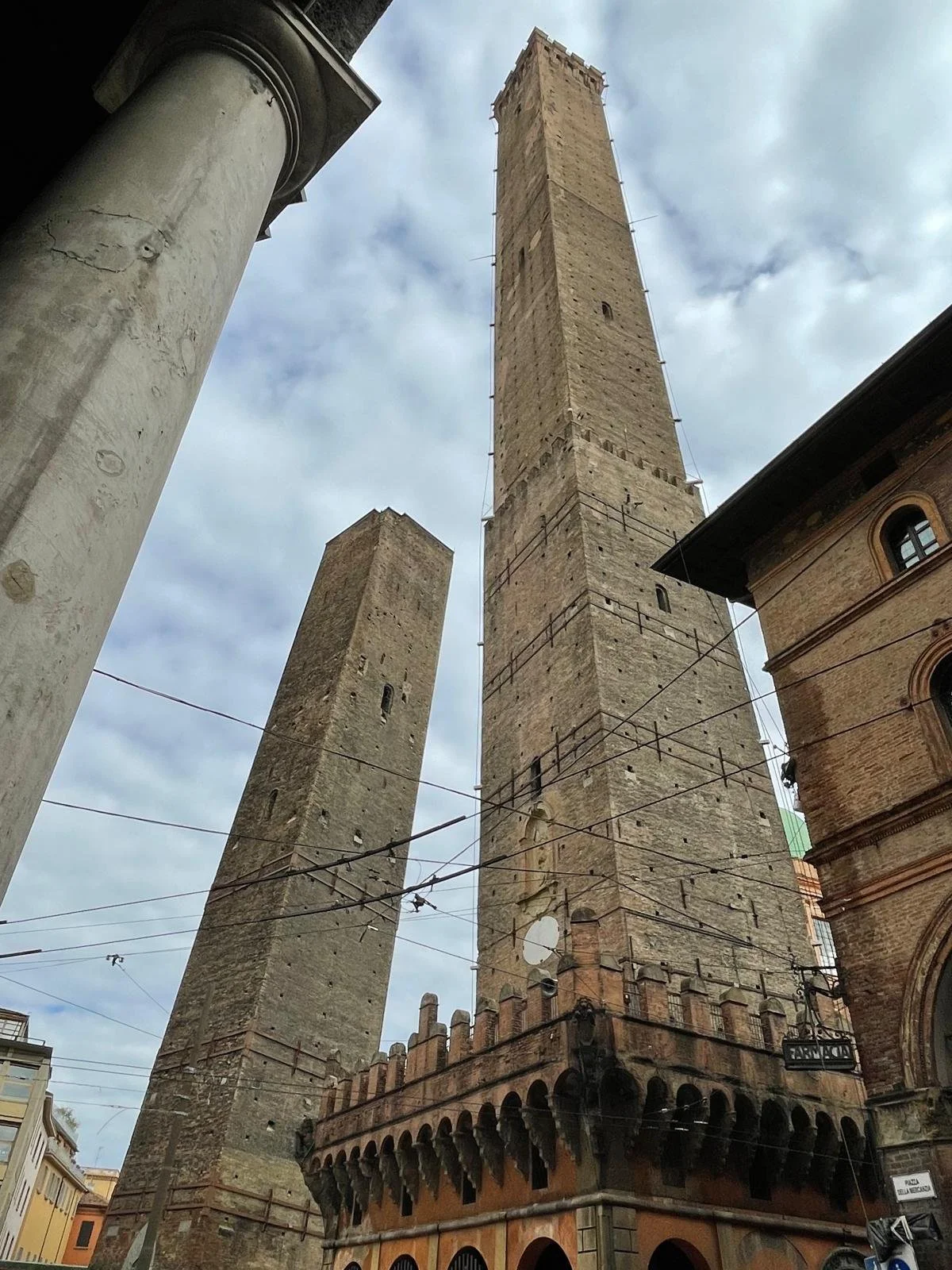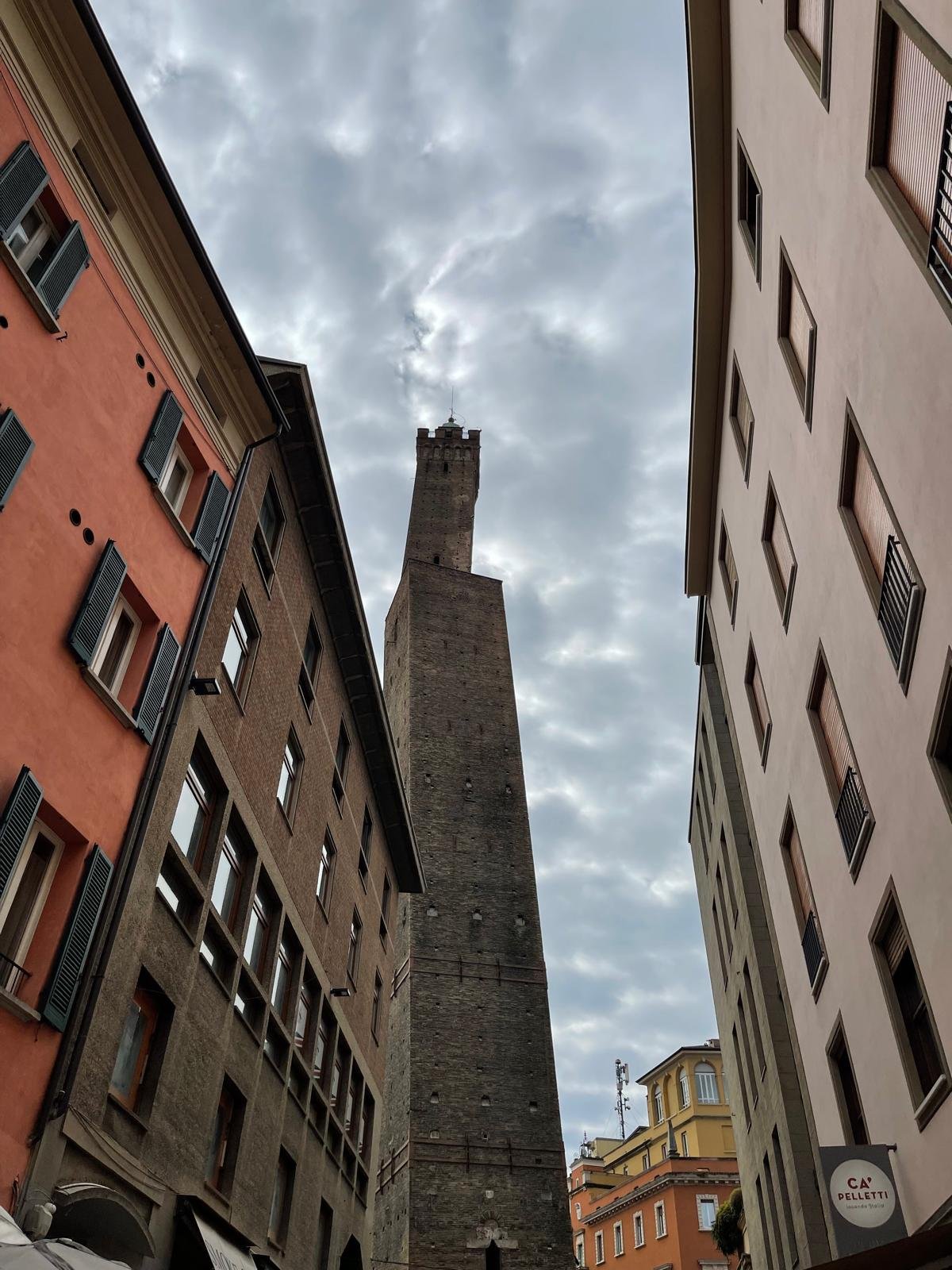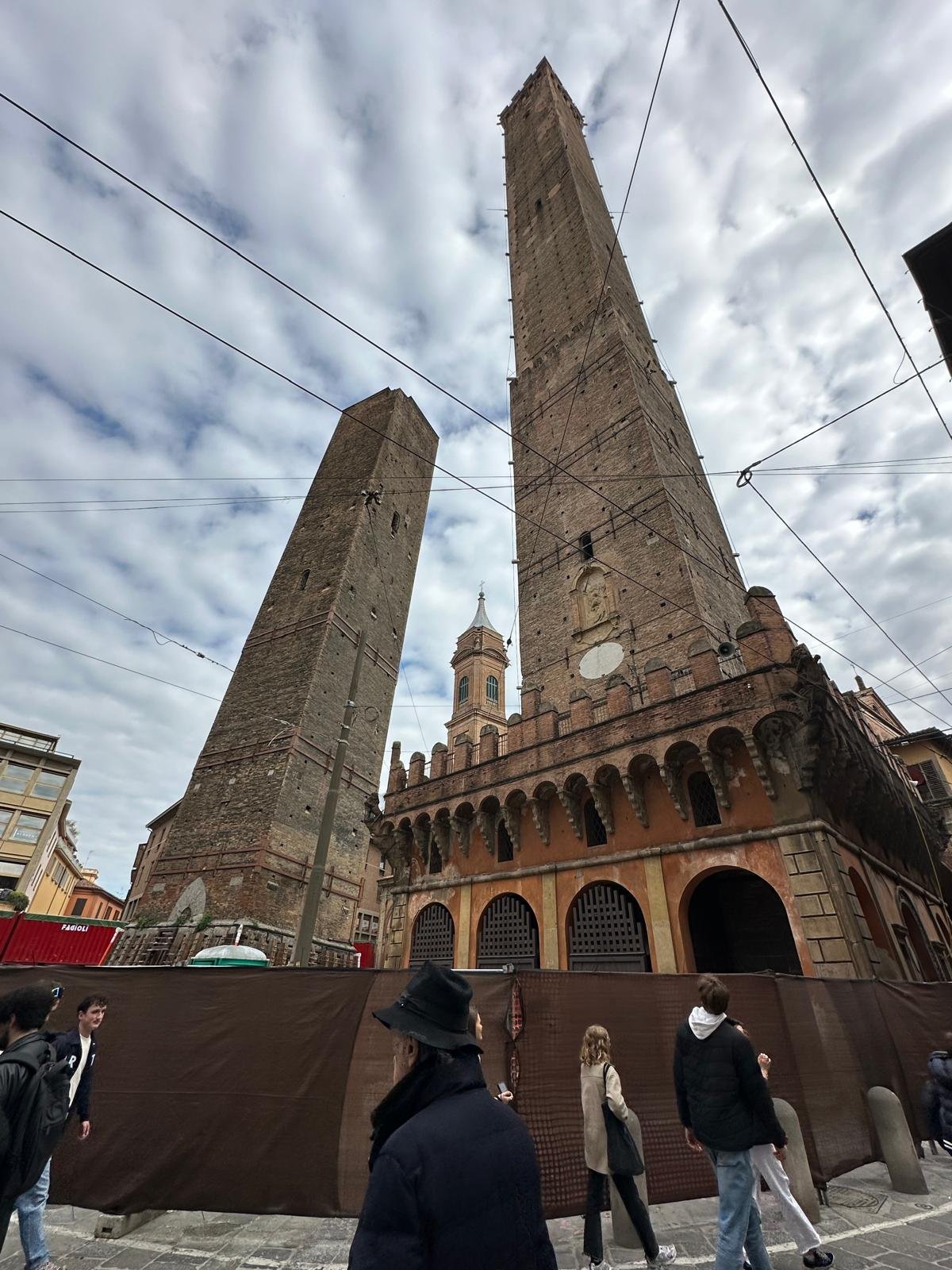AIA CONTINENTAL EUROPE & AIA UNITED KINGDOM CONFERENCE / Cork, Ireland – ‘Genius Loci’ – Part III
Fiona Mckay
The circular square at the Munster Technological University left a vivid, lasting, impression. Photo Credit: G Meagher AIA
Day 3 & 4: Site Visits / Further Talks and Extension Day
After Saturday’s convivial dinner, the attendees regrouped on Sunday morning for a bus trip to the Bishopstown Campus of Munster Technological University (MTU) before returning to CCAE for the final afternoon session.
Shane de Blacam, Founder & Director de Blacam and Meagher Architects
Those few attendees who were not familiar with de Blacam’s work did not anticipate grand architecture from a small technical college in Cork’s suburban outskirts. However, on entry, they found MTU’s training facilities, student areas and a library encircling a main ‘square’ that made an unexpectedly strong architectural statement.
With similar admiration, the Royal Academy on awarding de Blacam its 2003 Architecture Prize, described the MTU as ‘a brick colossus that elevates the former Institute of Technology … into a campus worthy of its new status as a Technical University’. Read more about the architect and the MTU campus HERE and HERE.
Although all attendees tried, no one photographer could fully capture the circular enclave or the absorbing interior spaces. MTU won the distinction of being the most photographed building of the Conference.
Photo Credits: H Kessler FAIA & RD Reber AIA







































Back at CCAE, the attendees were delighted when the MTU’s architect, de Blacam, joined the Conference, not only to discuss the MTU project, but also to repeat a talk he gave in London in 2023 on receipt of the Royal Academy architectural award.
His anecdotes – full of wit and dry humour -referenced his early travels in America, his studies at the University of Pennsylvania, his work with Louis Kahn on the Mellon Centre for British Arts and Studies at Yale and his own later buildings in Dublin and Cork. ‘America’, he stressed, ‘means a lot to me’.
David Flannery, Principle, Scott Talon Walker
After 2 ½ days of intensive tours and talks, the attendees were now thoroughly attuned to Cork’s unique character and were able to relax and enjoy David Flannery’s further analysis, ‘From the City to the Sea / Cork’s Maritime Character’.
His history of Cork focused on Cork Harbour’s extra deep channels, its Atlantic aspect and the sailing ships using it. Viking longboats, the Titanic and WWII battle cruisers – in other words, multiple invaders, traders and military armadas – all helped shape Cork’s distinctive ambiance. Read more about the architect HERE.
Photo Credits: E Fitzpatrick AIA RIBA
Guilia Valone, Senior Architect, Cork County Council
Guilia Valone addressed the Conference theme of genius loci with particular vigour, adding a Sicilian touch to Irish town planning. In her many examples of ‘placemaking’ and ‘re-inhabiting the streets’, she developed her theme of preserving and enhancing the character of Cork's smaller surrounding towns under the mantra of ‘restore, reveal and redefine’. It was evident that Valone is not fond of the automobile.
Photo Credit: E Fitzpatrick AIA RIBA
John Hegarty, Director, Fourem Architects
The final speaker in his talk entitled ‘Significance of Cork – Classical language in Architecture and Cork City’, started from the unusual perspective of finding similarities between Cork and other historic cities and places. In what ways, he asked, was Cork in 1590 similar to Florence in 1493? In its heyday, Cork regaled in classical buildings built in brick and clad in stone, but only a few remain today. He eagerly identified typical Cork architectural details that ‘anchored’ its historical character. See some selected details HERE.
EXTENSION DAY
A Monday Extension Day for those intrepid attendees spending an extra day at CE Conferences has become a long standing tradition. The Cork Conference Extension Day explored smaller towns surrounding Cork Harbour, primarily Kinsale and Cobh, and included several special attractions:
The Joseph Walsh Sculpture Studio (See HERE)
The Charles Fort (See HERE)
Titanic and Lusitania Museum (See HERE)
Kinsale Library designed by Cork County Council (See HERE)
In Kinsale, the attendees visited two contrasting RIAI award winning projects of note. The Kinsale Public Library won the 2024 ‘Conservation, Adaptation and Re-Use’ award and O’Donnell + Tuomey’s Stone Vessel won the 2024 RIAI ‘Special Award for Collaboration between Designers and Craftspersons’.
The Stone Vessel and Extension Day Attendees. Photo Credit: Ruth Murphy, Joseph Walsh Studio.
Cobh Harbour and the Kinsale Library. Photo Credits: RD Reber AIA and H Giblin Int’l Assoc AIA FRIAI.



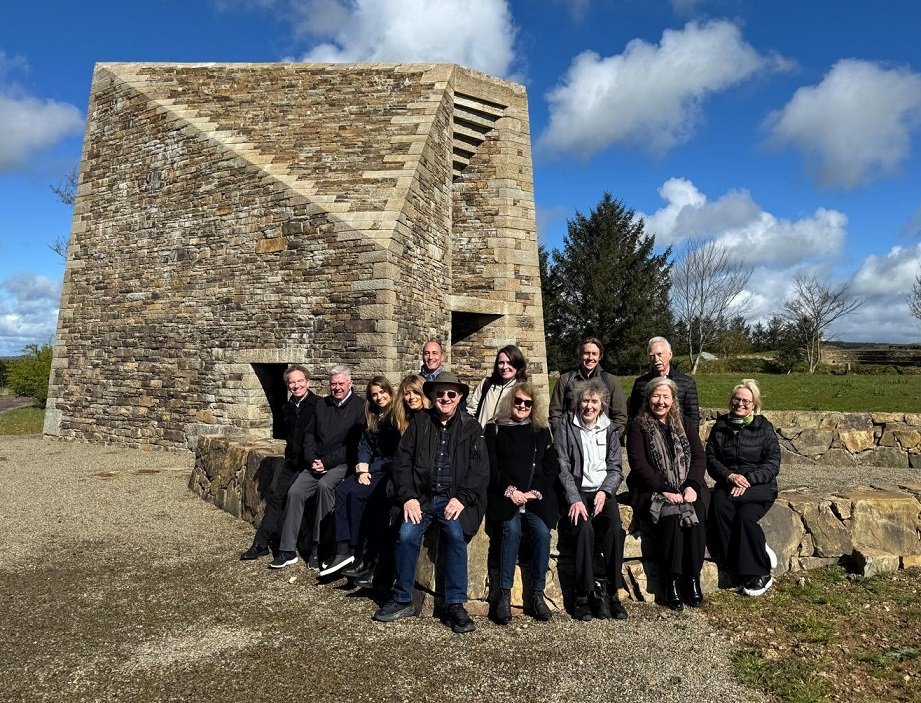










SUMMARY
Photo Credit: Liam Quinn
The 2025 Cork Conference was a joint effort from the two first AIA International Chapters - AIA Continental Europe and AIA United Kingdom - and was attended by 60 architects and guests.
The organising committee - Etain Fitzpatrick AIA RIBA and Helen Giblin FRIAI AIA Int’l Assoc - began conference planning in 2019, anticipating a Fall 2020 date. However, the Covid pandemic intervened and planning was put on indefinite hold even as the organizers received continual pleas from AIA colleagues to set a new date. Spring 2025 with its beautiful weather became a happy choice for all.
Once planning was reactivated in 2024, the organising committee recruited Karen Hassey AIA RIAI for additional help. Then - as always - AIA CE’s Chapter Executive, Irene Reidy, stepped in to provide excellent coordination, organisational skills and patience to keep the show on the road.
The conference received essential support from the many speakers representing prestigious RIAI firms in Cork and Dublin who so graciously volunteered their time. Speakers and attendees alike were also thankful for the support of Cork City Council and Cork County Council. Their enthusiastic and warm welcome ensured all participants felt very much at home.
Additional information on the Cork Conference can be found here:
Etain Fitzpatrick AIA RIBA, Irene Reidy and Helen Giblin FRIAI AIA Int’l Assoc, Karen Hassey AIA RIAI
Written by L D King, AIA (with assistance from E Fitzpatrick, AIA and H Giblin Int’l Assoc AIA)
On behalf of AIA Continental Europe and AIA United Kingdom
In special recognition of 30 years of cooperation and mutual appreciation between AIA Continental Europe and AIA United Kingdom, AIA UK has assembled a collection of its newsletters honouring past CE and joint CE/UK events from 1996 that can be found HERE.

























